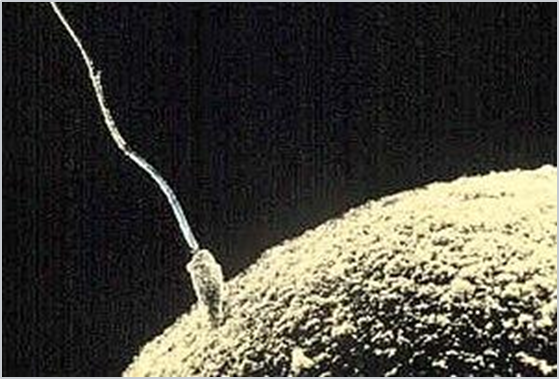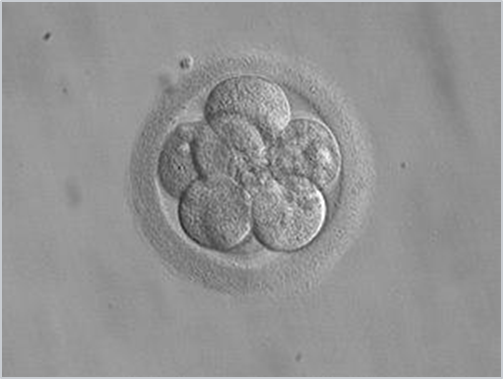10.2: Fertilization
- Page ID
- 167217
Fertilization is the process of the joining of a sperm and an ovum. A sperm is a male gamete that is released into the vagina of a female. In order for fertilization to occur, there must be a mature ovum present. Every month, one of the ovaries releases an ovum, which will meet one of the 4 million sperm the penis ejaculates into the vagina. The sperm swim through the cervix and into the uterus, which leads to the fallopian tubes. This is where fertilization is most likely to take place. The high amount of sperm in the ejaculate is needed, because only around 100 reach the fertilization site. In order to penetrate the egg, the sperm must first break through two barriers surrounding the ovum. Once a sperm reaches the plasma membrane of the ovum, it sets off a reaction that spreads across the membrane of the ovum, preventing other sperm from breaking through the ovum membrane. Once the sperm reaches the inside of the ovum, it sheds its tail, the two nuclei fuse, and now the 23 chromosomes from the ovum and the 23 chromosomes of the sperm join and they become a zygote. Chromosomes contain all the information needed to determine the genetic structure of the fetus. Typically(but not always), human beings have two chromosomes that determine sex (see chapter 3 on fetal reproductive development for more on this): A combination of X and Y will be assigned male or a combination of X and X will be assigned female. All ovum have X sex chromosomes whereas sperm have both X or Y sex chromosomes. Therefore, the male gametes determine the assigned sex of the baby.

Watch some Variations of sperm swimming.



